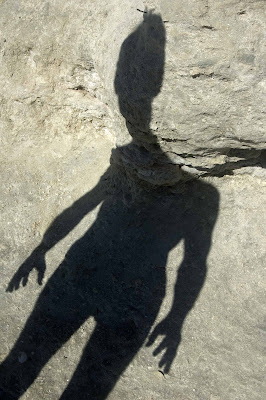In September 1986 a trip was made to the town of Odessa in what was at the time the Soviet Union.
Those were the interesting days to travel in that part of the world because the Soviet society was like an anomaly.
Technically underdeveloped, a society with a devastating and destructive social and political system combined with strong fear and paranoia for foreign visitors.
The purpose of the journey was to photograph the famous Eisenstein steps in Odessa for a project about famous steps worldwide to permanently exhibit in a large building of the IRS in the Netherlands.
Sergei Eisenstein made the silent film “The battleship Potemkin” in 1925.
The dramatic and innovative film shows the rebellion in 1905 of the crew of this Russian battleship against their oppressive officers of the Tsarist regime.
There is one famous scene in that film showing a child in a baby carriage without being controlled by anyone driving down the Odessa steps during a riot.


In Odessa one stays of course in the marvellous hotel called “Londonskaya”.
Built in the early 1900’s it is of a grandeur and luxury not found anymore.

Not by the own choice.
Travelling in the Soviet Union in the 80’s was regulated: the authorities decided where foreign visitors had to stay.
The rooms in the hotel “Londonskaya” were huge comparing to a small apartment in Paris.

The whole set-up, the furniture, the floors of parquet, the decorations and the overall allure made one feel to be a tsar oneself.

It was very busy in the hotel because that very first night about 5 couples were celebrating their wedding.
This is why in the large ballroom hall no table was available for dinner.
But the kind waiter approached two foreigners, who were enjoying a delicious dinner, and asked them if they would not mind to have a third person eating with them.
The two men were Norwegian officers of a ship in the harbour of Odessa.
Because the whole ballroom hall was filled with Russians involved in the wedding celebrations with music, dancing, eating and celebrating, these two sailors were like on an island all by themselves.
Hence, they welcomed the new foreigner heartily.
The Norwegians were most friendly and in a good mood.
In the hotel was neither beer nor wine.
But there was excellent Russian champagne.
This the Norwegians had been drinking.
What could they do?
Immediately the glass of the new friend was filled with champagne and to keep things in balance, another bottle was ordered on behalf of the polite photographer.
As so much was to share between the three men and so much to enjoy seeing the 5 newly wed couples and their families and friends having the evening of their lives, soon more bottles of champagne had to be ordered.
Somehow they got empty rather quickly.
The West European table, in the midst of the Soviet Union, was like the newly weds also having more and more the time of their lives and the excellent champagne had a lot to do with that.
Then suddenly all the lights went out.
The music stopped.
People who had been dancing hurried back to their seats.
A spotlight came on.
Shining on a man now all by himself in the centre of the hall.
He was a magician about to begin his show.
Russian entertainment.
Part of the routine of this magician was to magically make parakeets appear out of a large handkerchief in his hands.
He would wrestle the handkerchief and, oooops, another parakeet was circling in the air around the magician.
An act that would not qualify for a Las Vegas show but for Odessa it was spectacular.

However, next, something extraordinary happened with shocking consequences.
These parakeets were circling in the air but some landed on the floor around the magician.
One parakeet was behind him innocently looking for seeds or breadcrumbs when the magician started to move backwards.
Walking backwards with his face to the audience who all could see that behind him was his parakeet on the floor.
Many women started to scream and men shouting warnings but nevertheless, the magician stepped on his own parakeet.
The unfortunate bird was crushed to death.
This was definitely not part of the magical routine because the parakeet was very dead.
And could not be revived.
The magician hurriedly disappeared taking his dead parakeet with him.
The audience was stunned and shocked.
But the two Norwegians and the photographer believed this to be a hilarious event.
They started laughing and couldn’t stop.
Tears on their cheeks, falling from their chairs, until they noticed that they were the only ones in this hall filled with hundreds of people who were laughing.
And that made it even more hilarious.
Laughing loud and without shame watched by stunned Soviets.
A waiter came, obviously very angry.
And started pushing the damned foreigners out of the ballroom.
Kicked out for misbehaving.
Years before, in Odessa the Tsarist police was shooting at rioting citizens and killing them.
But 80 years later you were not supposed to laugh when a parakeet was accidentally killed.
++++++++++++++++++++++
To learn more about Sergei Eisenstein's film "The Battleship Potemkin", click on:
http://www.sensesofcinema.com/contents/cteq/00/4/potemkin.htmlor
http://en.wikipedia.org/wiki/The_Battleship_Potemkin.

















































